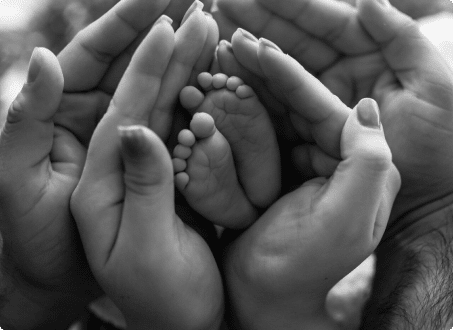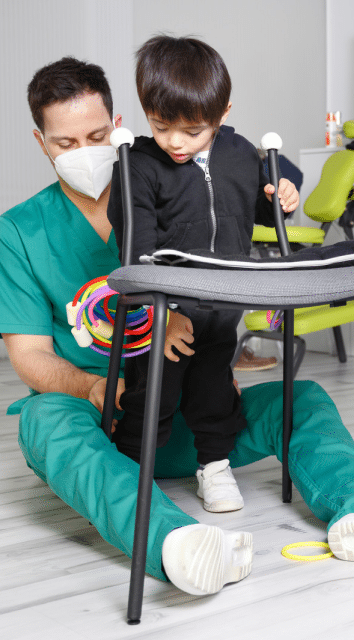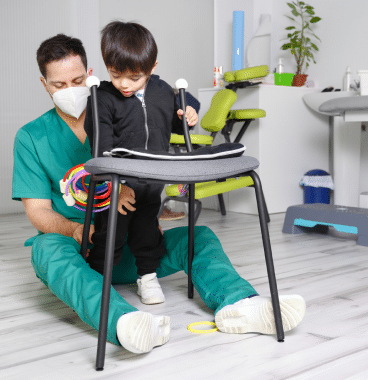Home Missouri Birth Injury Attorneys
Cerebral Palsy Statistics
Cerebral Palsy Statistics
Cerebral palsy is a group of disorders affecting movement, balance, and posture. Often regarded as a childhood condition, cerebral palsy affects more adults than children. Understanding cerebral palsy statistics is crucial for raising awareness, advocating for research funding, and supporting those impacted.
The legal team at Brown & Crouppen is committed to fighting for the legal rights of individuals with cerebral palsy. If you believe medical negligence in Missouri caused your child’s condition, you may have grounds for a cerebral palsy lawsuit. Call 800-536-4357 or reach out online to discuss your legal options.
Quick Cerebral Palsy Awareness Facts
- Cerebral palsy is the most common motor disability in children.
- It may come as a surprise that cerebral palsy affects more adults than children.
- About 75-85 percent of children with cerebral palsy have spastic cerebral palsy, which stiffens the muscles.
- There is no known cure for cerebral palsy, but early intervention can improve outcomes.

How Common Is Cerebral Palsy?
The CDC’s community-based cerebral palsy tracking shows that:
- Cerebral palsy is more common among boys than girls.
- The statistical prevalence of cerebral palsy varies by ethnicity. It is more common among black infants than white, while Hispanic and white infants have an approximately equal statistical rate.
- About 41 percent of children with cerebral palsy also have co-occurring epilepsy.
What Percentage of the Population Has Cerebral Palsy?
Cerebral palsy statistics worldwide show that the condition affects 1.5–4 infants per 1,000 live births. There are about 17 million people with cerebral palsy across the globe. Approximately 1 million people have cerebral palsy in the U.S. (about 1 in 345 children). This translates to around 10,000 babies born with cerebral palsy in the U.S. each year.
Though currently available cerebral palsy statistics shed some light, ongoing research is needed to fully capture the impact of cerebral palsy across all ages and populations. Increased advocacy and government funding can facilitate a more nuanced understanding of cerebral palsy and the needs of those affected. Self-reporting through cerebral palsy registries also allows individuals and families to contribute valuable insights.
Cerebral Palsy Subtypes: Frequency and Characteristics
The four main types of cerebral palsy are spastic, dyskinetic (which is further categorized into athetoid and dystonic), ataxic, and mixed. The percentages roughly break down as follows:
- Spastic cerebral palsy – 77 percent of cases
- Dyskinetic – 5 percent of cases
- Athetoid – 3-4 percent of cases
- Dystonic – 2-15 percent of cases
- Ataxic cerebral palsy – 3 percent of cases
- Mixed cerebral palsy – 10-15 percent of cases
Spastic cerebral palsy is by far the most common type and is characterized by muscle stiffness. According to CDC data from 2008, 77 percent of 8-year-old children identified with cerebral palsy had spastic cerebral palsy.
Distributions based on affected parts of the body also vary:
- Quadriplegia (all four limbs are affected) – 36 percent
- Hemiplegia (primarily one side of the body is affected) – 25 percent
- Diplegia (all limbs are affected with the legs more so than the arms) – 21 percent
- Monoplegia (one arm or leg is affected) – 8 percent
- Triplegi (three limbs are affected) – 7 percent
- Other/none – 3 percent
Though statistics and facts about cerebral palsy provide insight into the distribution of cerebral palsy types, each individual’s experience with cerebral palsy is unique. Proper diagnosis and classification are crucial for identifying appropriate medical intervention and support.

Though statistics and facts about cerebral palsy provide insight into the distribution of cerebral palsy types, each individual’s experience with cerebral palsy is unique. Proper diagnosis and classification are crucial for identifying appropriate medical intervention and support.
Disparities in Cerebral Palsy: Demographic Risk Factors
Age, gender, and race all influence cerebral palsy rates. Key findings on cerebral palsy demographics reveal that:
- Cerebral palsy is more common in boys than girls.
- Black children are more likely to have cerebral palsy than white children.
- Hispanic and white children have similar rates of cerebral palsy.
- Adults are more likely to have cerebral palsy than children.
- 75 percent of adults with cerebral palsy report experiencing pain.
- Life expectancy for individuals with cerebral palsy is often similar to the general population.
A 2011 study found that black infants were 29 percent more likely to have cerebral palsy than white infants. Racial disparities in cerebral palsy may be linked to differences in low birth weight and premature birth rates.
Recognizing how demographic disparities impact cerebral palsy is essential for advancing prevention strategies, ensuring equitable access to care, and meeting the long-term needs of individuals with cerebral palsy.


Walking and Mobility in Individuals With Cerebral Palsy
The ability to walk varies widely among individuals with cerebral palsy. CDC data shows that:

- 11 percent walk using a hand-held mobility device
- 30 percent have limited or no walking ability
Mobility challenges may increase with age. About a third of adults with cerebral palsy report declining mobility over time. Early intervention, physical therapy, and assistive devices can help improve walking ability.
The ability to walk varies widely among individuals with cerebral palsy. CDC data shows that:
- 50-60 percent of children with cerebral palsy can walk independently
- 11 percent walk using a hand-held mobility device
- 30 percent have limited or no walking ability
Mobility challenges may increase with age. About a third of adults with cerebral palsy r
eport declining mobility over time. Early intervention, physical therapy, and assistive devices can help improve walking ability.

Understanding the Origins of Cerebral Palsy: Causes & Risk Factors
Cerebral palsy is primarily caused by cerebral trauma before or during birth. In approximately 85-90 percent of cases, cerebral palsy is congenital. Some of the leading causes and risk factors include:
- Low birth weight (less than 5.5 lbs)
- Premature birth (before 37 weeks but especially before 32 weeks)
- Multiple births (twins, triplets, etc.)
- Maternal infections during pregnancy
- Infantile jaundice and kernicterus
- Complications during birth
- Brain infections like meningitis
- Infantile strokes
- Traumatic brain injuries
- Seizures shortly after birth
- Genetic conditions
Black children have higher rates of low birth weight and prematurity, which may contribute to the increased cerebral palsy prevalence. However, the specific causes of cerebral palsy are often unknown, even when risk factors are present.
What Is the Most Common Cause of Cerebral Palsy?
Congenital cerebral palsy, which develops before or during birth, can be caused by factors affecting fetal brain development. Maternal infections, such as rubella, cytomegalovirus (CMV), and toxoplasmosis, are among the most common causes, as they can cross the placenta and interfere with normal brain development.
Additionally, exposure to toxic substances like methylmercury and certain medications during pregnancy may also increase the risk of cerebral palsy by disrupting brain development in a growing fetus.
What Causes Cerebral Palsy During Pregnancy?
In addition to infections and toxic exposures, many other maternal health issues during pregnancy can contribute to the development of cerebral palsy. For example, maternal thyroid problems and seizures may impact fetal brain development and increase the risk of cerebral palsy.
Similarly, complications affecting the placenta, such as placental abruption (premature separation of the placenta from the uterine wall) or placental insufficiency (inadequate blood flow and nutrient delivery to the fetus), can disrupt oxygen supply in the developing brain, potentially leading to brain damage and cerebral palsy. Various birth injuries can also cause cerebral palsy.
Was Your Child Diagnosed with Cerebral Palsy?
If you believe medical malpractice during pregnancy or birth caused your child’s cerebral palsy, contact Brown & Crouppen. Our attorneys can help determine if you have a case. Call 800-536-4357 or reach out online to discuss your legal options.

- Data and Statistics for Cerebral Palsy. (2020, December 30). Centers for Disease Control and Prevention. https://archive.cdc.gov/www_cdc_gov/ncbddd/cp/data.html
- 11 Things to Know about Cerebral Palsy. (2023, February 23). Centers for Disease Control and Prevention. https://www.cdc.gov/ncbddd/cp/features/cerebral-palsy-11-things.html
- Prevalence of cerebral palsy, co-occurring autism spectrum disorders. (2020, May 22). Centers for Disease Control and Prevention. https://www.cdc.gov/ncbddd/cp/features/prevalence.html
- Wu, Y. W., et al. (2011). Racial, ethnic, and socioeconomic disparities in the prevalence of cerebral palsy. Pediatrics. https://doi.org/10.1542/peds.2010-1656
SCHEDULE A FREE CONSULTATION
